#Insectivora
Text
It Came From The Wastebasket #01: Is This An Insectivore?
Most of the wastebasket taxa featured this month are completely extinct and known only from fossils, but to start things off let's take a look at a major example of how even groups with living members could have their classification muddled up for centuries.
———
The name Insectivora first came into use in the early 1820s, and was used to refer to various "primitive-looking" small insect-eating mammals, with modern shrews, moles, hedgehogs, tenrecs, and golden moles as the original core members.
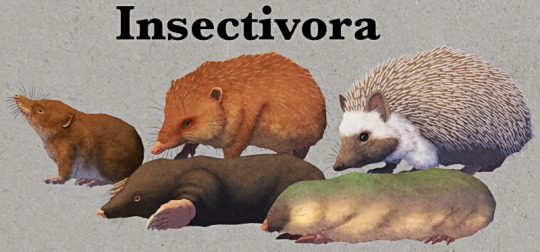
Then over the next few decades solenodons, treeshrews, sengis, and colugos all got lumped in with them too.
By the early 20th century insectivorans were considered to represent the "primitive" ancestral stock that all other placental mammals had ultimately descended from, and any vaguely similar fossil species also got dumped under the label. Extinct groups like leptictids, cimolestans, adapisoriculids, and apatemyids all went into the increasingly bloated Insectivora, too, making the situation even more of a wastebasket as time went on.
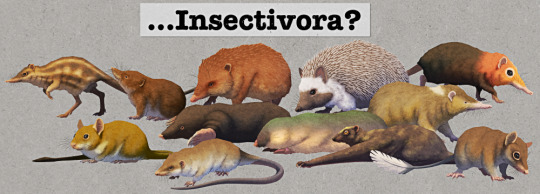
The problem was that the only characteristics that really united these various animals were very generic "early placental mammal" traits – small body size, five clawed digits on the hands and feet, relatively unspecialized teeth, and mostly-insectivorous diets – and attempts at making sense of their evolutionary relationships were increasingly convoluted.

(Image sources: http://hdl.handle.net/2246/358 & https://knowyourmeme.com/memes/pepe-silvia)
The rise of cladistic methods from the 1970s onwards resulted in a lot of "insectivores" finally being recognized as unrelated to each other, removing them from the group and paring things back down closer to the name's original definition. The idea that insectivorans were ancestral to all other placentals was abandoned, instead reclassifying them as being related to carnivorans, and the remaining members were recognized as just retaining a superficially "primitive" mammalian body plan.
Just shrews, moles, hedgehogs, solenodons, tenrecs, and golden moles were left, and to disassociate from the massive mess that had been Insectivora this version of the group was instead now called Lipotyphla.
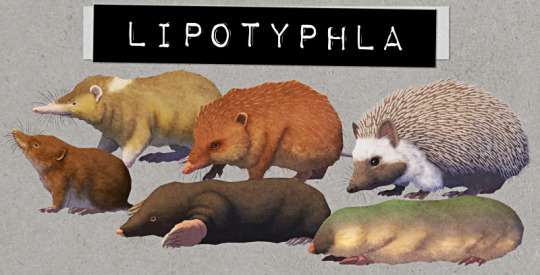
But there were still no unique anatomical links between the remaining lipotyphlans. And then once genetic methods became available in the late 1990s, something unexpected happened.
Studies began to suggest that tenrecs and golden moles were actually part of a completely different lineage of placental mammals, the newly-recognized afrotheres, with their closest relatives being sengis and aardvarks. Meanwhile the rest of the lipotyphlans were laurasiatheres, closely related to bats, ungulates, and carnivorans.
Lipotyphla was suddenly split in half. For a while it was unclear if even the remaining shrew-mole-hedgehog-solenodon group was still valid – hedgehogs' relationships were especially unstable in some studies – but by the mid-2000s things began to settle down into their current state.
Finally, after almost 200 years of confusion, the insectivore wastebasket has (hopefully) now been cleaned up. The remaining "true lipotyphlans" do seem to all be part of a single lineage, united by their genetics rather than by anatomical features, and are now known as Eulipotyphla.
A few fossil groups like nyctitheriids and amphilemurids are generally also still included, but since this classification is based just on their anatomy it isn't entirely certain. The only exception to this are the nesophontids, which went extinct recently enough that we've actually recovered ancient DNA from them and confirmed they were eulipotyphlans closely related to solenodons.
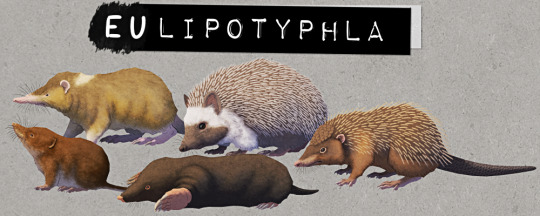
———
Nix Illustration | Tumblr | Twitter | Patreon
Bonus species IDs under the cut:

#it came from the wastebasket#wastebasket taxon#taxonomy#insectivora#lipotyphla#eulipotyphla#biology#paleontology#art#science illustration#paleoart#palaeoblr
393 notes
·
View notes
Text

Insectivora
-Johnson's Household Book of Nature 1880
6 notes
·
View notes
Text

Madeline von Foerster (American, 1973) - Carnival Insectivora (n.d.)
2K notes
·
View notes
Text
You're probably aware some animals have penis bones right? They're called bacculum. But did you know the acronym to remember which animals have them is PPRICC?
Primates (humans are an exception), Pinnipedia (seals), Rodentia, Insectivora (they renamed this group recently to Eulipotyphla, it's shrews and moles), Chiroptera (bats), and Carnivora.
Do with this information what you will.
15 notes
·
View notes
Text

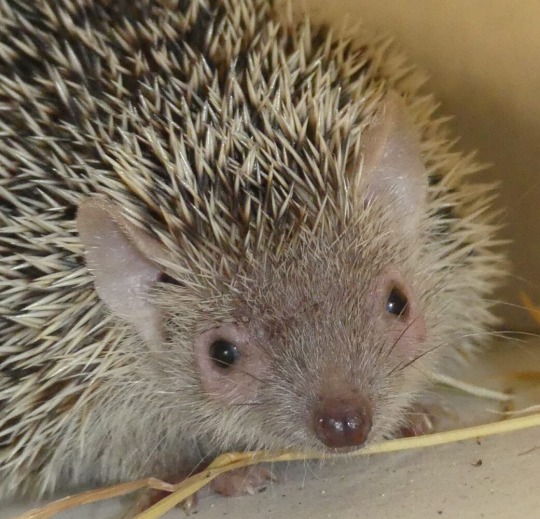


Lesser hedgehog tenrec
Echinops telfairi
Family tenrecidae, order Afrosoricida, superorder Afrotheria (the elephants, sengis, manatees, aardvarks, and hyraxes)
These guys bear an uncanny resemblance to another African animal: the four toed hedgehog.

But four toed hedgehog’s are in an entirely different clade! Laurasiatheria, like pangolins, cats, dogs, moles, deer, and rhinos.
All tenrecs have a cloaca like reptiles, so these guys only have one hole to excrete waste.
They’re terrestrial and spend the day curled up sleeping under leaves, logs and anything else they can hide under. If it’s really hot, they sleep splayed out.
They eat insects and sometimes small vertebrates. They forage alone with the exception of mothers foraging with young.
They’ve become common exotic pets. I’ve held one before.
These guys are in a relatively new proposed clade: Afroinsectiphilia. These guys are afrotherians that were thought to be in Insectivora, which is not considered a legitimate group anymore.
@jackalspine @lemon-snake
12 notes
·
View notes
Text
Hedgehogs are not rodents!
Small mammal ≠ rodent.
Unlike another familiar quilled friend, the porcupine, hedgehogs are not rodents. A rodent is any mammal in the order Rodentia. They are characterized by their pair of continuously growing incisors, which has lend them their name: Rodentia comes from the Latin word rodere, “to gnaw”.
Let’s talk teeth!
Rodents don’t have canines, and they have a large gap between their huge incisors and the premolars (most species at least). Those teeth were made for gnawing! And they have to gnaw, because their teeth never stop growing. In some species even the molars and premolars have to be worn down constantly by an appropriate fibrous diet or else they’ll become too long.
While rabbits and hares have similar continuously growing teeth (they have four incisors in the upper jaw instead of two), they’re not rodents but are members of a closely related sister group, the Lagomorpha.

Muskrat skull with a set of seriously impressive incisors. Go big or go home!
(Image source: landofstrange.com)
Most rodents are mainly herbivorous. Very few are exclusively herbivorous though, because they tend to eat the occasional eggs, meat, fish and/or insects as well. This means many rodents including popular pets such as rats and hamsters are actually omnivorous. However, for most of these rodents the majority of their diet still consists of plant matter and I prefer the name “herbivorous omnivore”.
Rodent dentition reflects this, as they do not have canines and the molars tend to be large and well-equipped for grinding fibrous plant matter.
Even less rodents are predators. One of them is the grasshopper mouse, an adorable animal which might be the honey badger of the rodent kingdom. It turns scorpion venom into a painkiller and howls like a wolf. A true badass!
But what about hedgehogs?
If we take a closer look at a hedgehog skull we see something entirely different. We see a mouth full of sharp teeth: large incisors facing forwards, small but pointy canines and (pre)molars. It’s clear these aren’t rodent teeth!
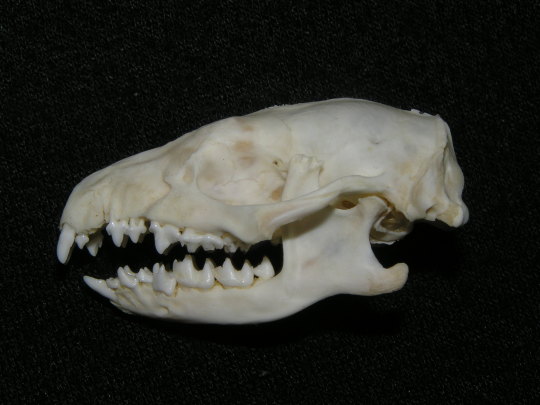
(Image source: viktorjezek.estranky.cz)
What stands out most (especially when viewed from the front) are those large incisors. While rodents have two enlarged incisors placed next to each other, hedgehogs have adorable fangs.
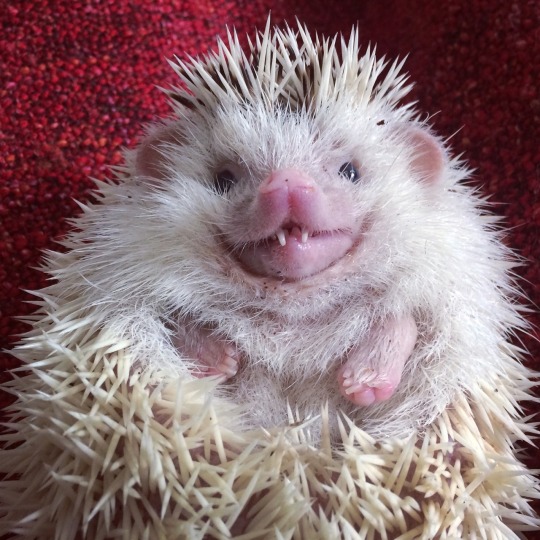
Hedgehogs: secretly vampires
Dentition, as we’ve seen in rodents, can tell us a lot about an animal’s dietary preferences. Hedgehog teeth are very typical for an insectivorous omnivore. Those vampire fangs are great for catching and holding onto squirmy invertebrates. The lower central incisors face forwards instead of upwards to pick up prey. They fit right between the gap of the top incisors.
The front teeth are followed by two more incisors in the top jaw and one more in the lower jaw. After these come the small canines and the premolars, which have sharp cusps made for crunching invertebrate prey.
The third upper premolar is relatively large and pointy, and paired with the first lower molar it mimics the carnassial tooth found in carnivores - a tooth which makes a shearing motion for faster and easier cutting (as opposed to tearing) through flesh. Ideal for eating large insects and the occasional reptile, bird or rodent!
The molars are broad and have relatively low cusps compared to stricter insectivores such as moles. This suggest a more varied, omnivorous diet than just invertebrates.
To put it in other words, hedgehogs are walking trash bins that will eat basically everything that moves. Or doesn’t move. Anymore. While they are primarily insectivorous they are considered opportunistic omnivores (I prefer the term “insectivorous omnivores”), which means they’ll eat whatever is available at that moment with a preference for insects and other invertebrates, carrion, eggs, small reptiles, rodents and birds, and a bit of plant matter (to a certain degree).
But teeth aren’t the only factor playing a part in animals’ dietary preferences. Another big difference between rodents and hedgehogs is the latter not possessing a caecum: the part of the intestine which helps digest cellulose (plant matter). Hedgehogs have an extremely simple gut system and do not digest plant matter well, even though they occasionally eat minor amounts of it. In fact they’re such walking trash bins most of the undigested plant matter found in hedgehog guts and faeces has likely been accidentally ingested.
Okay, so hedgehogs aren’t rodents and they are insectivorous omnivores. But where do they belong on the evolutionary tree?
I won’t go into too much detail or else this will get way too long (like it isn’t already I’m sorry, I like teeth). Just like their dietary preferences, their classification was somewhat of a mess. They were previously grouped in the now defunct wastebasket taxon Insectivora. The requirements to join this group of fun insect-crunching mammals were basically: are you a primitive placental mammal? Do you eat insects? You’re not a rodent? We have no idea what to do with you otherwise? Great, you may now join the Ancient Placental leftovers!
There are still vigorous debates between traditional palaeontologist and molecular phylogeneticists on how the grouping of modern placental mammals should be done, because (short version) there’s still a lot we don’t know but the general consensus, at least as far as the ol’ Insectivora goes, currently favours the molecular phylogeneticists.
The traditional palaeontologists placed the hedgehogs together with several other mammals such as shrews, tenrecs and (golden) moles in the order Insectivora, based on fossil records. Due to the very primitive features of the animals (both living and extinct) that got grouped in Insectivora it was viewed as an evolutionary grade, and early researchers assumed the Insectivora must contain the stock out of which all other placental mammals had evolved.
Cue molecular phylogenetics: by analysing molecular differences, mainly in DNA sequencing, researchers discovered that some of the animals grouped together in Insectivora aren’t even closely related to each other! This meant the entire order had to be split up and re-grouped. They were no longer viewed as the base of placental mammal evolution but got their own separate branches on the evolutionary tree instead. This is the current hypothesis on hedgehog and “Insectivora” evolution.
The family tree of placental mammals based on molecular phylogenetics looks like this. In red underlined are the members of the now defunct Insectivora; the golden moles, elephant shrews and tenrecs got regrouped in Afrotheria while the threeshrews and colugos were placed in Euarchonta.
In Laurasiatheria we find the remaining animals from Insectivora, which are now grouped in Eulipotyphla. The hedgehogs and their closest living relatives, the gymnures or moonrats stick together in their own little family Erinaceidae (formerly the order Erinaceomorpha, which is still the name on the image), and the moles, shrews and solenodons in three other families.
The order Rodentia is underlined in green. As you can see, while they shared a common ancestor millions of years ago rodents and hedgehogs aren’t closely related to each other.

(Image source: wikipedia)
TL;DR hedgehogs are not rodents + fun facts:
Hedgehogs don’t have continuously growing teeth
Hedgehogs do not chew or gnaw on things like a rodent does
Hedgehogs need animal protein to form the bulk of their diet
Hedgehogs need chitin-based fibre in their diet (chitin is found in invertebrate exoskeletons)
Hedgehogs cannot digest cellulose (plant matter) well
Hedgehogs have adorable vampire teeth
Hedgehogs’ closest living relatives are the gymnures aka moonrats (which, despite the confusing name, are not rodents either)
Hedgehogs are also related to shrews, moles and solenodons. None of which are rodents!
Eulipotyphla is the name of their order, which means “truly fat and blind”. These researchers don’t beat about the bush! Although I vote for “truly cute with bad eyesight”.
If you want to know if an animal is a rodent or not, look at its teeth. If it has a mouth full of tiny sharp teeth it definitely isn’t a rodent!
#animals#hedgehogs#rodents#classification#morphology#dentition#teeth#molecular phylogenetics#research#insectivora#placental mammals#hogblr#petblr#rodentblr#long text
369 notes
·
View notes
Text
It has come to my knowledge that hedgehogs are no longer counted in the group Insectivora (”insect eaters”), as that group was shown to be defunct. They know belong to Eulipotyphla, “truly fat and blind”.
This is delightful.
1 note
·
View note
Photo

CARNIVAL INSECTIVORA by Madeline Von Foerster
163 notes
·
View notes
Photo

@m.oli.arte Troglodytes troglodytes. Acuarela #acuarela #pintura #arte #ave #insectivora #chochincomun #cavernicola #naturaleza #pajaritos #watercolor #artwork #paint #picture #art #bird #insectivorous #nature #aquarelle #peindre #peinture #oiseau #insectivore Publicación © autorizada por su autor original. La Asociación Cultural GAPAsturias (Grupo de Artistas del Principado de Asturias), sin ánimo de lucro, impulsa de una forma exclusiva a sus artistas profesionales y aficionados asturianos o residentes en Asturias, España, en sus diferentes expresiones creativas. Apóyanos. Hazte socio artista o colaborador de nuestra/tu Asociación. Descarga tu solicitud de inscripción en http://gapasturias.com/artistas (at Asturias - España) https://www.instagram.com/p/B9re0_dFe2A/?igshid=9vooa2oppnet
#acuarela#pintura#arte#ave#insectivora#chochincomun#cavernicola#naturaleza#pajaritos#watercolor#artwork#paint#picture#art#bird#insectivorous#nature#aquarelle#peindre#peinture#oiseau#insectivore
0 notes
Text

Apatemyids were a group of unique early placental mammals that lived during the first half of the Cenozoic, known from North America, Europe, and Asia. Due to their specialized anatomy their evolutionary relationships are rather murky (they were traditionally part of the convoluted mess that was "Insectivora"), but currently they're thought to be a very early offshoot of the Euarchontoglires, the branch of placentals that includes modern rodents, lagomorphs, treeshrews, colugos, and primates.
Living in what is now western Europe during the mid-Eocene, around 47 million years ago, Heterohyus nanus was a small apatemyid about 30cm long (~12") – although just over half of that length was made up of its tail.
Like other apatemyids it had a proportionally big boxy head, with large forward-pointing rodent-like incisors in its lower jaw and hooked "can-opener-shaped" incisors in its upper jaw.

Example of an apatemyid skull from the closely related American genus Sinclairella.
From Samuels, Joshua X. "The first records of Sinclairella (Apatemyidae) from the Pacific Northwest, USA." PaleoBios 38.1 (2021). https://doi.org/10.5070/P9381053299
The rest of its body was rather slender, and fossils with soft tissue preservation from the Messel Pit in Germany show that it had a bushy tuft of longer fur at the end of its long tail.
But the most distinctive feature of apatemyids like Heterohyus were their fingers, with highly elongated second and third digits resembling those of modern striped possums and aye-ayes. This suggests they had a similar sort of woodpecker-like ecological role, climbing around in trees using their teeth to tear into bark and expose wood-boring insect holes, then probing around with their long fingers to extract their prey.
———
NixIllustration.com | Tumblr | Patreon
References:
Kalthoff, D. C., W. Von Koenigswald, and C. Kurz. "A new specimen of Heterohyus nanus (Apatemyidae, Mammalia) from the Eocene of Messel (Germany) with unusual soft part preservation." Courier Forschungsinstitut Senckenberg 252 (2004): 1-12. https://www.researchgate.net/publication/263714512_A_new_specimen_of_Heterohyus_nanus_Apatemyidae_Mammalia_from_the_Eocene_of_Messel_Germany_with_unusual_soft-part_preservation
Koenigswald, W. V., and H-P. Schierning. "The ecological niche of an extinct group of mammals, the early Tertiary apatemyids." Nature 326.6113 (1987): 595-597. https://www.researchgate.net/publication/232761846_The_ecological_niche_of_early_Tertiary_apatemyids_-_extinct_group_of_mammals
Samuels, Joshua X. "The first records of Sinclairella (Apatemyidae) from the Pacific Northwest, USA." PaleoBios 38.1 (2021). https://doi.org/10.5070/P9381053299
Silcox, Mary T., et al. "Cranial anatomy of Paleocene and Eocene Labidolemur kayi (Mammalia: Apatotheria), and the relationships of the Apatemyidae to other mammals." Zoological Journal of the Linnean Society 160.4 (2010): 773-825. https://doi.org/10.1111/j.1096-3642.2009.00614.x
#science illustration#paleontology#paleoart#palaeoblr#heterohyus#apatemyidae#apatotheria#euarchontoglires#mammal#art#convergent evolution#exceptional preservation#it's like if a rat tried to become an aye-aye
179 notes
·
View notes
Text
New shrews! New shrews! New shrews!
13 notes
·
View notes
Text

Drosera capensis
#Drosera capensis#drosera#carnivore#plants#plant#planta#planta carnívora#insectivoras#personal#mosca#fly#dead#photography#fotografía#fotografia#México
25 notes
·
View notes
Photo

¡Muy buenos días a todos! Con la inminente llegada de la primavera mis droseras ya están empezando a sacar su tallo floral. Es hora de ver la preciosa flor que desarrollan nuestras carnívoras para lograr reproducirse. ------------- Tip del día. Las Plantas Carnívoras desarrollan sus tallos florales muy largos y altos para que los insectos polinizadores no caigan en sus trampas y puedan realizar su función con éxito. ------------- #drosera #droseraaliciae #aliciae #invernadero #sphagnum #plantasinvernadero #plantascarnívoras #plantascarnivoras #plantascarnivorasoficial #plantasexoticas #plantasexóticas #insectivoras #sphagnummoss #plantasespaña #tallofloral #primavera https://www.instagram.com/p/CK1u-a3ruT3/?igshid=7bo0oyg37tjy
#drosera#droseraaliciae#aliciae#invernadero#sphagnum#plantasinvernadero#plantascarnívoras#plantascarnivoras#plantascarnivorasoficial#plantasexoticas#plantasexóticas#insectivoras#sphagnummoss#plantasespaña#tallofloral#primavera
0 notes
Text
I'm about to learn you a thing about Hedgehogs!!
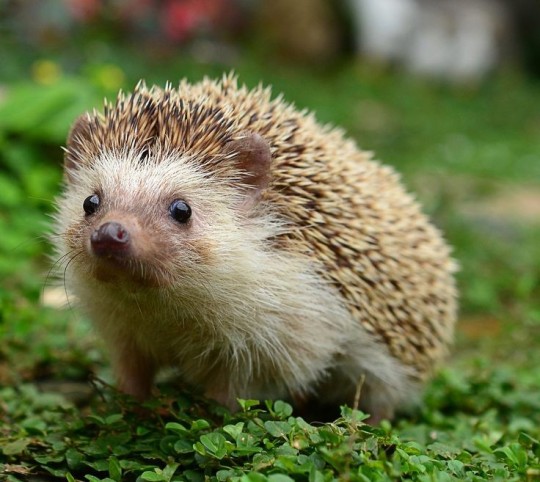
Hedgehogs are funky little creatures that come in 17 different species, and they are mainly found in Europe, Asia, Africa, and New Zealand!
They're one of the oldest mammals, thought to have first evolved from Litolestes, Leipsanolestes, Oncocherus, Cedrocherus, and the Deinogalerix about 15 million years ago!
Before the word "hedgehog" came into use in the 1450s, these little guys were called urchins!
Their most identifiable feature is definitely their spines, which are made out of keratin!
If you try to look up a date when hedgehogs were discovered, you most likely won't find one. However, there are records of hedgehogs being domesticated as pets as far back as the 4th century B.C. by the Romans!
In the wild, hedgehogs mainly eat insects but have also been known to eat bigger animals such as frogs and baby birds!
Domesticated hedgehogs thrive off of a steady diet that is high in protein and low in fat, and some sources even say you can feed a hedgehog cat food.
Hedgehogs are in the order insectivora and have 36 teeth, with the first canine tooth generally being larger than the others.
Hedgehogs weigh anywhere between 1 to 2 lbs, but their weight fluctuates often and can be hard to maintain in the wild.
I think I love these animals a tad too much.
#weird history#hedgehog#hedgehogs#weird science#weird biology#animals#animal facts#cool animal facts#weird animal facts
81 notes
·
View notes
Text

Madeline von Foerster, Carnival insectivora, 2019
→ http://www.madelinevonfoerster.com/art-2020-carnival-insectivora.htm
2 notes
·
View notes
Photo

SUBMISSION SUNDAY // 🕷️🖐️"Carnival Insectivora"🖐️🐞 by @madelinevonfoerster. Want *your art* to reach a wider audience? Be sure you post it on Instagram with the hashtag! Every Sunday, our Social Media Manager @elizah_leigh_art_writer will scroll through your tagged art and select her favourites. Then, she'll share them on Beautiful Bizarre Magazine’s Instagram, Facebook, Twitter, Tumblr and Pinterest accounts. What a great way for our 1M+ social media followers to see what you’re up to! You will also be considered for inclusion in Beautiful Bizarre’s quarterly print magazine community feature, called “Join the Tribe”. …
posted on Instagram - https://instagr.am/p/CLQfJhCFMIZ/
24 notes
·
View notes